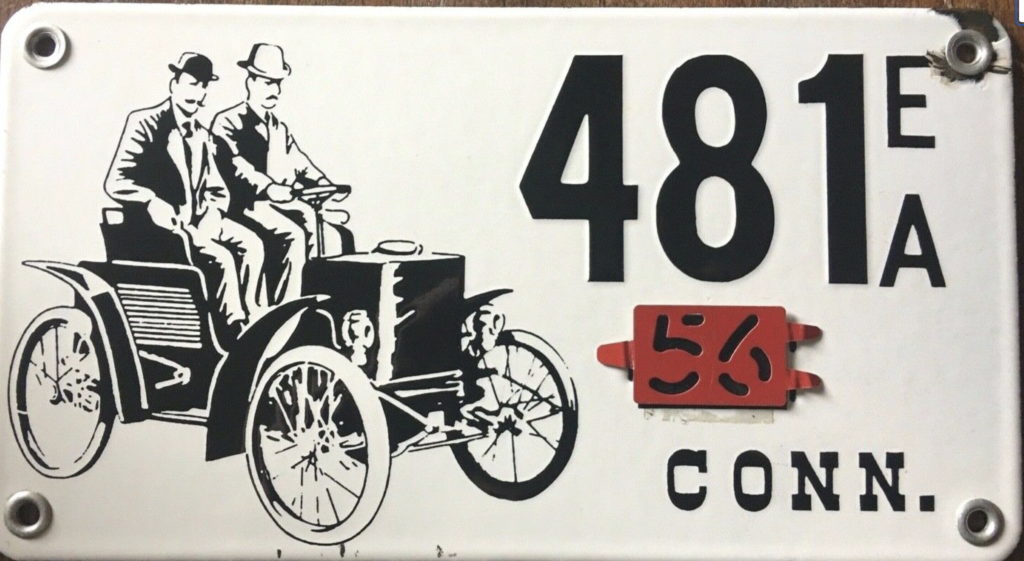By Marcy Fuller
(c) Connecticut Explored Inc. Spring 2008
Have you ever noticed the Early American (antique) license plates on classic cars registered in Connecticut? Have you wondered what type of car is pictured on the plate? And who are those two fellows sitting in that car? I have gone to many car shows and have asked those same questions to avid car collectors, and I have also asked a clerk at the motor vehicle department who issued those plates to car owners. No one had ever been able to answer my questions correctly, until I found the answer in old newspaper clippings—and, as it happened, in my own family’s papers.
In 1952 Connecticut issued its first special license plates for cars produced in 1925 or earlier. The porcelain-covered steel plates featured an image of two men in hats riding in an open black car with big wheels, the same image that graces today’s historic vehicle plates.
Contrary to many people’s assumptions, the car is not a Model T: these Connecticut plates aptly feature a Connecticut-built car, the Columbia Mark VIII built in 1897 in Hartford by Pope Manufacturing Company. [See “The Horseless Era Arrives,” Spring 2005]
Behind the wheel sits Hiram Percy Maxim, the car designer at Pope Manufacturing who prodded the bicycle-building company into building automobiles. Maxim’s passenger is my great-grandfather, Fred A. Law, the model-room foreman at Pope. Law built the model for the car he’s shown sitting in and for all the company’s experimental cars. This photo (which appeared in the Hamilton Standard Blade on September 21, 1944 along with an article about Fred A. Law’s retirement) shows the Columbia Mark VIII series designed and built in 1902, which made a record run from Chicago to New York in just 76 hours in 1903. Many of Law’s car designs incorporated features that are still in use today. One of his basic patents was the selective gearshift.
Note: Connecticut stopped issuing the Early American plates in 2014.
Marcy Fuller is a radiographer living in Westbrook. “I decided to write this article about the Connecticut antique license plate because of my family connection to this bit of history and the fact that it seemed a part of our state’s history had been forgotten. When I would tell this story, people seemed so amazed that I thought others, especially car buffs, would enjoy reading about it.” Fuller adds that she is “currently struggling to transcribe my great-grandfather’s 700-plus-page handwritten manuscript of his life. It is a fascinating story that I hope to someday see published.”
Explore!
“The Horseless Era Arrives,” Spring 2005
Read more stories about products made and invented in Connecticut on our TOPICS page.

